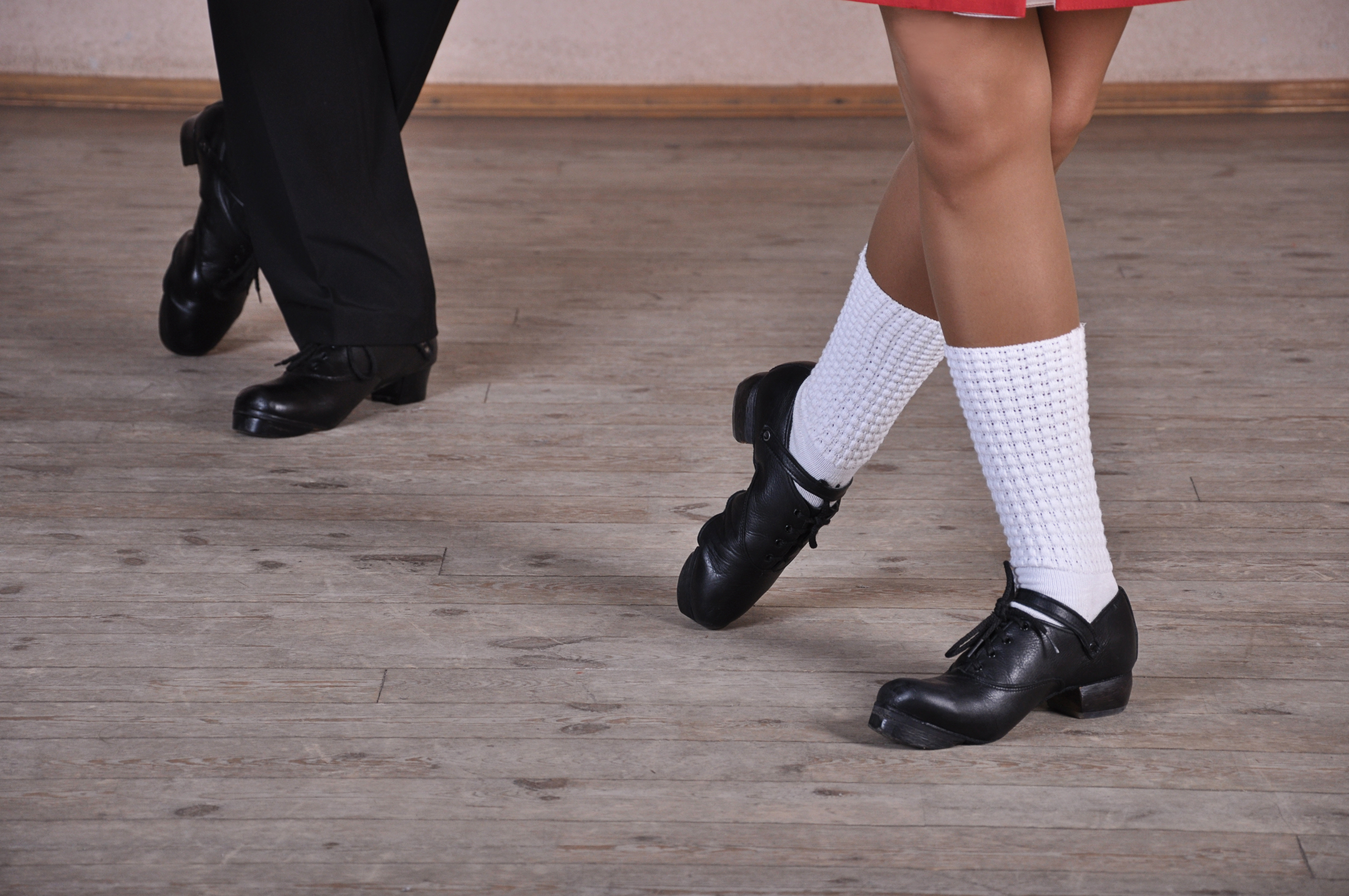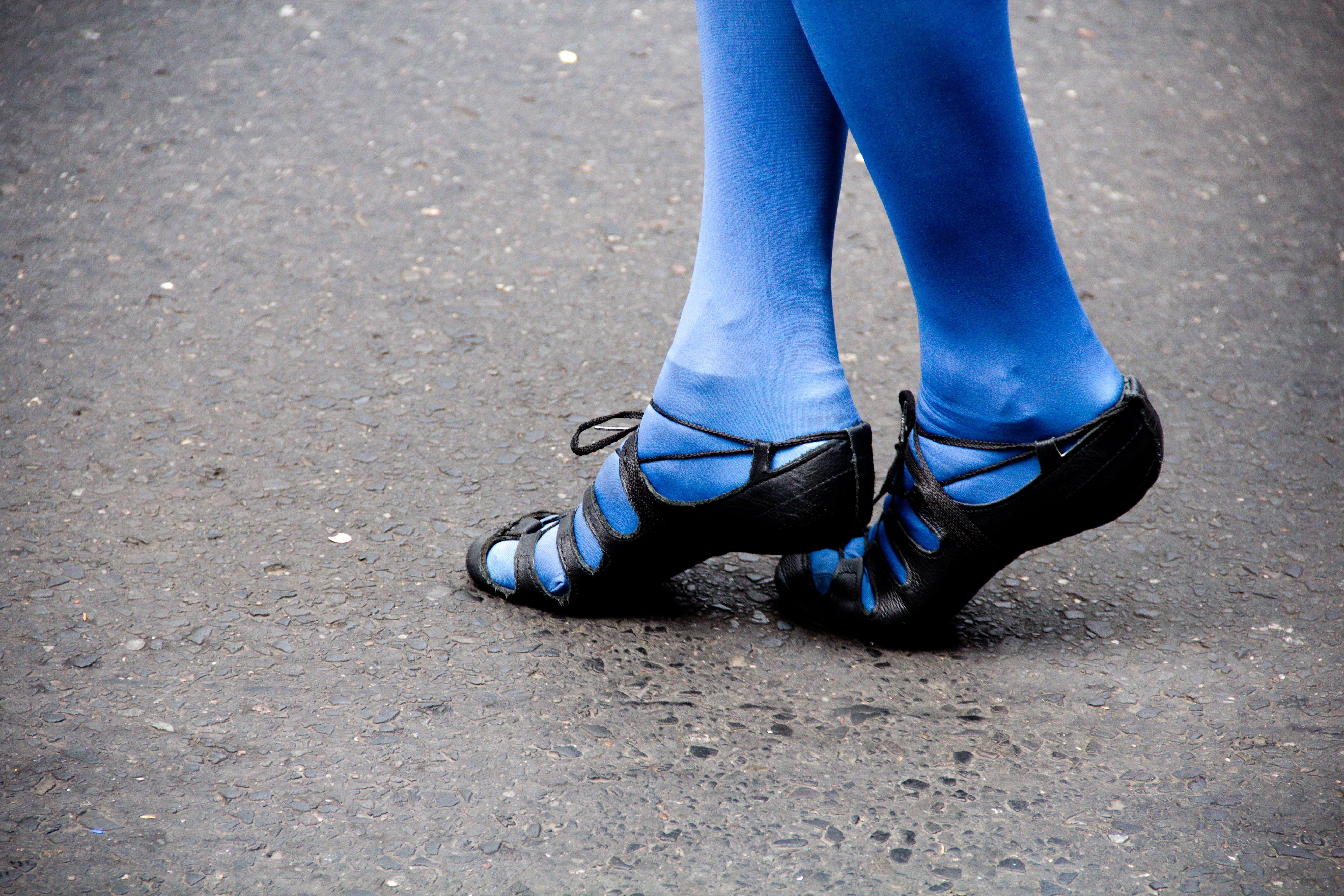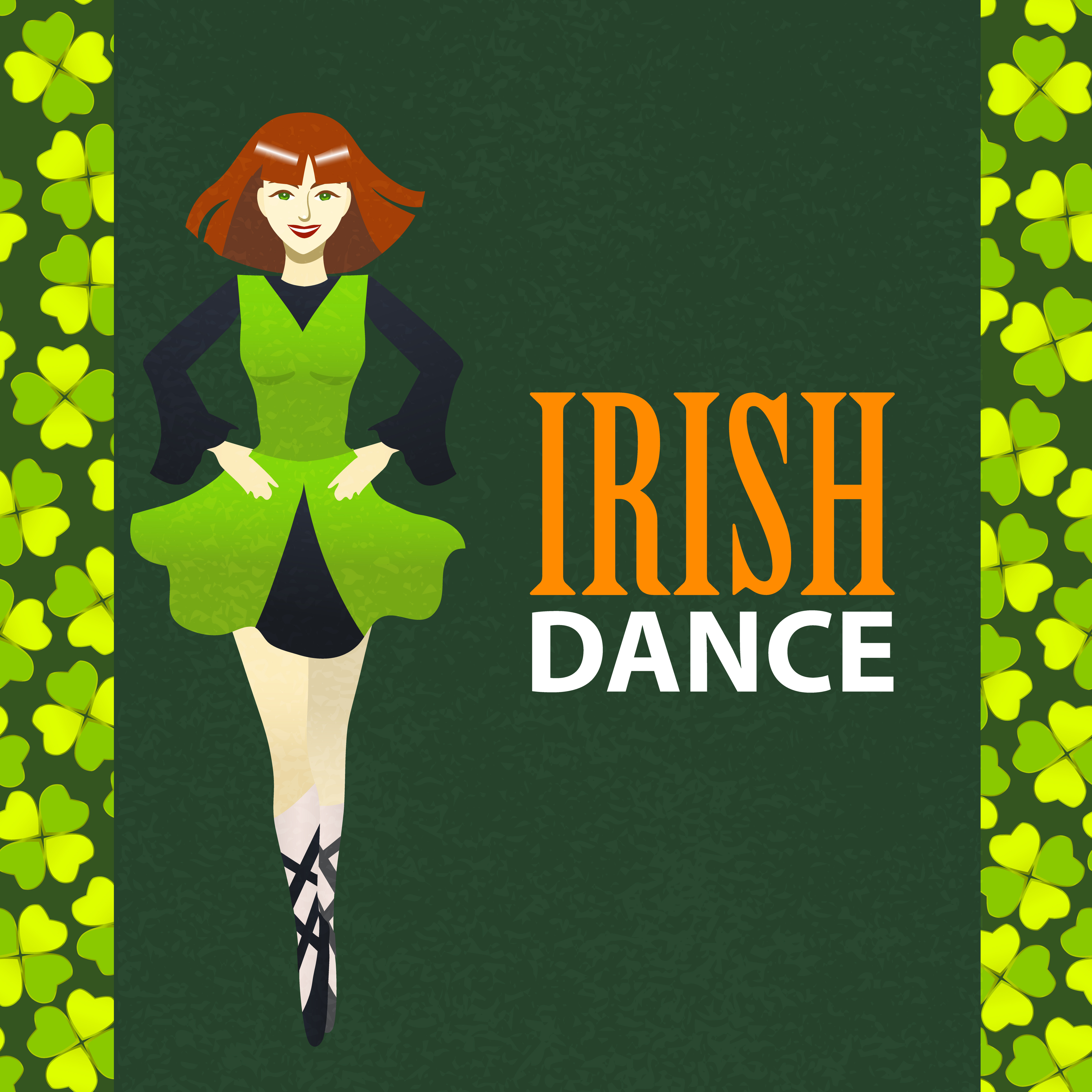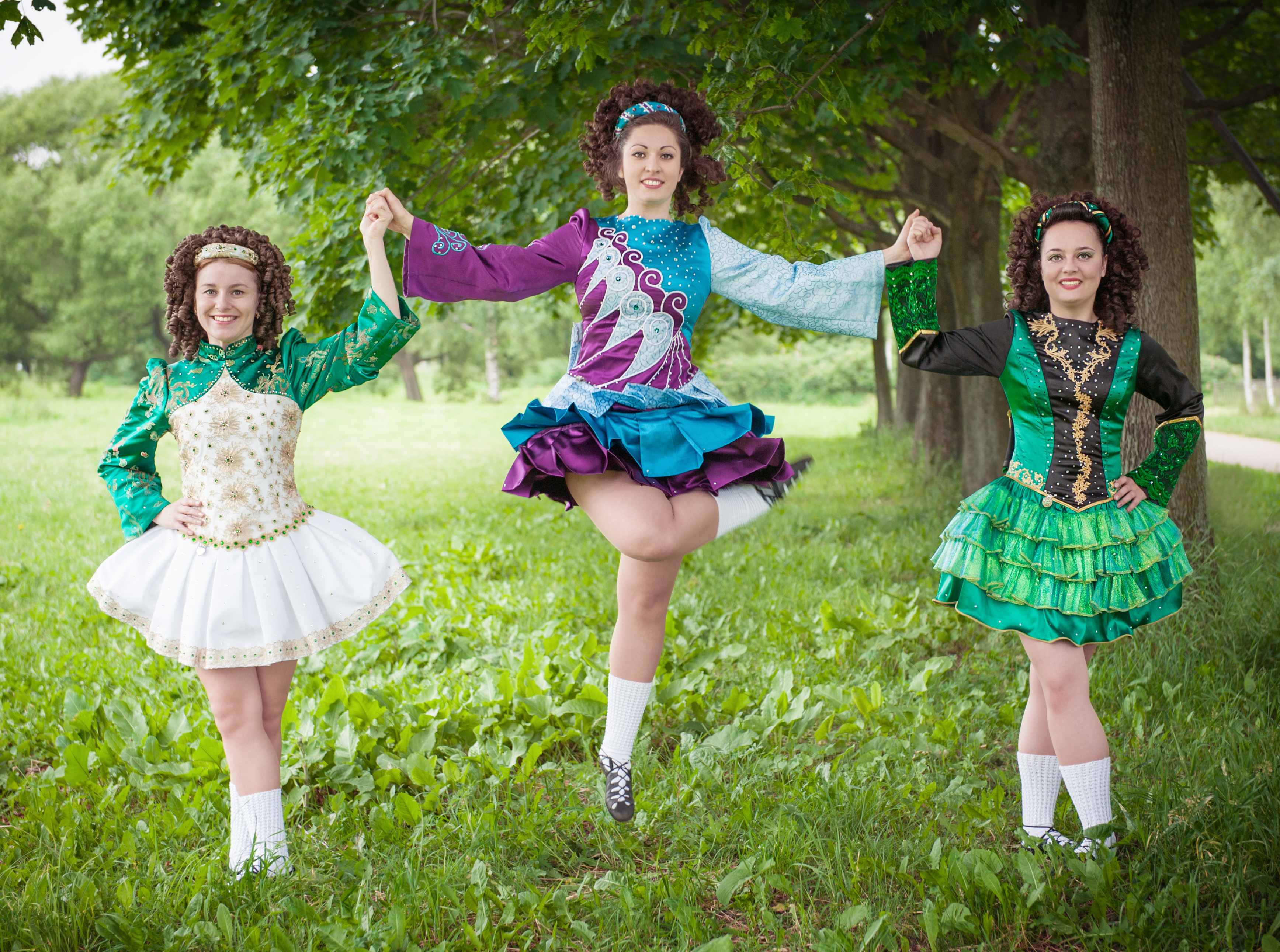May the leprechauns dance over your bed and bring you sweet dreams.
Dance 'til You Go Mad
To this day, across much of the Western Isle, the lore of fairies remains so strong, farmers will divert crops, homebuilders will adjust property lines, hikers will swing wide of treks and the burliest and red-beardiest of men dare not trifle with the environmental curiosity known as, The Fairy Ring, a.k.a. The Fairy Fort. In the Irish language, they are called lios or raths; at the turn of the 21stC., there stood, it was believed, some 40,000 fairy rings spotting the Irish countryside. Archaeologists believe the oldest of these date to c. 600BCE. These earthen mounds, sometimes notable only as remaining stone-circles or circular soil-impressions, are considered evidence of pre- and early-Celtic dwellings: from the late-Iron Age to the beginnings of Irealand's Christian Era, c. 5CE.
The Tuatha Dé Danann and the Fir Bolg, Ireland's earliest inhabitants, were thought to possess mythical abilities and kept supernatural congress with, amongst other entities, banshees, leprechauns and fairies. These mythics considered fairy rings (known collectively as tumuli) to be not only fairy-domains but portals to the supernatural world. It also remains a claim that fairy rings are where, if you dare, you might find a leprechaun's gold.
Repercussions, or curses, sustained from disturbing a fairy fort, even plucking a flower or cutting brush within its bounds, range from general maladies and acute melancholia to freak accidents and even death. However, curses present themselves in many curious forms. Of the more curious curses is, "The Dance".
Any human who dares to enter a fairy ring, thus disturbing it, must "dance with the fairies until they go mad or perish with exhaustion".
Well now, I must have dared to enter a fairy ring, if not on my most recent holiday on the Isle, perchance in a past life, or some dim-witted ancestor did, because I am exhausted ... and loving it! If going mad is for you, and your cardio game is strong, follow me into the fairy ring and keep reading.

A Brief History of Irish Dance
As with so many things Irish, The Dance has a long history: largely emanating from the Celts and Druids. Before the entrenchment of Christianity, pagans focused their religious ceremonies on the natural world. This included dances-in-the-round, often around trees: symbols of life, growth and vitality. Initially, music accompanying these ceremonies was simple: drum and song.
The pinnacle of these ceremonies was called Aonach, or Óenach: the first one dating c. 3,200BCE and held by High King Lugh, at the Hill of Tara, seat of the High King, in County Meath, just north of Dublin. Aonach was a congregation of Ireland's kings, summoned by the High King, usually to commemorate a notable death. King Lugh held the first to commemorate the death of his mother, Tailtiu. Legend tells, she died from exhaustion, on August 1st, whilst clearing the family land for farming. This first funerary event became an annual tradition: later known as Óenach Tailten. It was celebrated the same time each year: the last fortnight of July through the first fortnight of August.
What is a fortnight, JennyPop?, the fair readers asks?
Why, a fortnight is fourteen days, or two weeks, silly.
Eventually, these gatherings became less commemorations of death and more celebrations of life. (Actually making it through yet another year in ancient Irealnd was summat to celebrate, indeed! Let's face it, being born in ancient Ireland, you might as well have been born in a grave.) The yearly festival was eventully called, Lughnasadh: from the old Gaelic meaning, "assembly of Lugh".
Over the years, Lughnasadh transformed and extended into four, cross-quarter festivals: (Imbolc: the beginning of Spring; Bealtaine: the beginning of Summer; Óenach Tailten, or Lughnasadh-proper: the OG of Celtic festivals, the halfway-mark between Summer and Autumn solstices, and the beginning of Harvest season; and, finally, Samhain: the beginning of Winter).
In a rough and dark, often lethal existence, these gatherings of song, dance, feast, drink, trading, truces, dispute-settlements, sport, games and hook-ups, attended by folks from across all the land, were exciting diversions to plan and anticipate throghout the year, kind of like San Diego Comic-Con. Millennia later, these festivals would give way to today's Irish Dance competitions, known as feis. However, the feis of today, dotting small towns and metropoli across the globe, are dedicated to the competition of dance and music, yet still hearty with the cheer and communion of seeing old friends and meeting new.
As for the fairies? They've been there since the beginning, dancing around trees in magical circles with the Druids and Celts, fluttering, fitting and flirting along seaside cliffs and grass mounds during Samhain and Lughnasadh festivals, and treble-hopping, rocking and leaping in ballrooms and convention centers from Orange County to Dublin at modern feis. All mad, too, every last oe of them, I tell you. Mad for The Dance. All mad from the fairies' curse.

In the beginning, the neolithic Celts and Druids danced for religion. Circa 400CE, the Christians landed, settled in and borrowed bits of paganism, to appease the locals, but essentially, slowly changing the flowers-and-fairies model to Jesus-and-Joseph. Dance was still incorporated into ceremony, again, borrowing from the pagans.
During this new period, Irish monks, the smarty-smarts of the day, notated much of this in illustrated manuscripts: of greatest note, The Book of Kells. If you observe carefully the motifs and decoration on modern, Irish dancers' dresses, you'll see the borrowed imagery of said-Medieval manuscripts.
During the 10thC, as was their wont, Viking raiders invaded and burned the fuck-all out of Ireland's libraries: books, manuscripts, diaries, historical-records, land assays, etc.. So, as is their wont, the Irish adjusted to this adversity by singing and dancing, keeping alive their traditions thusly. Drink, too, to be sure. After a harsh raid, who doesn't want a bit of whiskey or mead?
As Ireland recovered from the Viking Era, mainly by living, loving, working and trading amongst their invaders, generations meandered on (much like this post) and Nordic infusion gained a stronghold in Irish culture. So, the monks went straight back to work, documenting this new normal of Medeival life on the Western Isle.
Of course, it wouldn't be Ireland without more uninvited guests. In the 11thC., the Normans crossed the Irish Sea, kicked in the door and kicked up their heels. Unlike the Vikings and their metaphorical vineagar, the Normans used honey, proffering land grants, textiles and pretty French and English girls to the tribal Kings. Quickly, they speckled the landscape with magnificent castles, keeps and fortresses. Within a generation, the Normans embedded their customs into Irish culture, including dance.
One such introduction was the "carol": a circular dance wherein the dancers "follow" the voice of a solo singer who stands in the middle of the circle. Over the coming centuries, the carol would evolve into three, altogether new dances: the Irish Hey, the Riinca Fada (a.k.a. the Long Dance, featuring a long line of dancers) and the Trenchmore. These were no longer circle dances, but line-dances and they became all the rage by the 17thC.. Simple songs and bodhrans (goatskin drums played with a single drumstick, called a tipper) grew into great accompaniments adding tin whistles, concertinas and Irish bagpipes (a.k.a. uilleann pipes). Witness, the beginning of true craic.

JennyPop Notes: Types of Irish Dance
Traditional Irish Step Dancing: in Flat Down technique*; only legs and feet move; male and female dancers form long lines, circles, squares or are partnered in reels; consists of dances set to traditional Irish music with a fast tempo.
Modern Irish Step Dancing: in Ballet Up technique*; full-body movement; traditionally only female dancers perform more balletic, upward dance movements like leg swings, hops, jumps and sashays to the music; dancers perform in soft-shoes, likened to lace-up ballet flats, called "ghillies".
Irish Set Dancing: in Flat Down technique; four, male/female couples dance together, to long-form choreography; each couple then performs same choreography as individual couples.
Irish Ceili Dancing: in Ballet Up technique, it is most native, traditional, Irish, folk dance; originating in the 16thC., it is always performed to traditional Irish music; dances consist of quadrilles, reels, jigs and long or round dances.
Irish Sean Nós Dancing: in Flat Down technique; heavy steps on the accented beat of the music; steps are softer shuffles and brushes, than hard bangs and taps; allows arm movement; the only dance style performed as a solo; unstructured, it is also the only style that allows the dancer to improvise his or her choreography; one of the oldest of the traditional Irish dance styles.
Irish Two Hand Dancing : in Flat Down technique; performed much like Irish Set Dancing, with the exception is it more relaxed, social and danced to polkas, Irish hornpipes, waltzes and jigs; also like Irish Set Dancing, it is choreographed and performed by couples.
*Flat Down technique: Refers chiefly to steps in a more horizontal space and body weight transferred to the floor: i.e., trebles, boxes, cuts, hop-backs and bangs.
*Ballet Up technique: Refers chiefly to steps in a more vertical space and body weight transferred upward: i.e., leaps, rocks, hops, kicks including the "cabriole", taken from the French, it is a ballet step called "chasse", leaping into the air while the left calf beats under the right calf that is extended forward in the air.

Whilst "Riverdance" produces world-class spectacle on vast stages, the casual, social and amateur Irish dancers you see at pubs, festivals, faires, etc., are generally solos or small groups. due to limited square-footage. If you've ever wondered how that much fancy footwork can stay restrained in one spot, look to the 18th and 19thC. dancers. The emergence of the modern art/sport was bred out of large, highly crowded cities. Dancers utilized what space they could, in practice and performance, including uninstalled front doors, barrels and tabletops. (This is also a common occurrence at Malarkey's in Newport Beach, The Dubliner Irish Pub in Copenhagen and Dick Mack's in Dingle.)
As regards the 18thC, an era in which formality and structure reigned over most aspects of life, Irish dance parameters became notably stringent and rigid in this period, thanks to the Dancing Master. This strict instructor gave rise to the recognizable form of Irish dance we know today.
"Dancing Master" was a prestigious vocation, a teacher who travelled to villages and towns across Ireland, holding group lessons for the peasant and privileged classes alike; although, the students were largely of the peasant class, taking advantage of these opportunities when they came to town; the privileged class hired private instructors when desired. The best dancers in a group would have been awarded solos, to perform for the town and, as dancefloors did not grow in the wild, some villagers would sacrifice their front doors, temporarily, to give the soloist a better platform.
What did grow in the wild, was the human nature to compete. There grew grand competition not only within a Master's group, for coveted solos, but also amongst rival Dance Masters and their groups throughout neighbouring counties. This fierce spirit gave rise to even more competition throughout the counties and country. Today, we have fierce feis and competitions, ranging from local to regional to national to international to professional levels, i.e. Riverdance. World Irish Dance Association, a.k.a. "Worlds", and Oreichtas are premiere levels for competition.
Be the competitors toddlers or pro principal-dancers, don't let the boys' charming caps, suspenders, pressed vests and dress pants, or the girls' sweet dresses, shiny tiaras, mile-high ringlet-wigs - I still don't know the tradition behind those wild wigs - and schoolgirl socks fool you ... dem folks is bad-ass. As the t-shirt reads, "Irish Dancing: like any other sport, only much harder."
For this writer, the pursuit of Irish dance is natural. A far-reaching background in dance, sport and costuming (read: San Diego Comic-Con, Renaissance Faire and Hallowe'en enthusiast) makes it a natural enticement. Ballet, Polynesian dance, gymnastics, track, fencing and yoga are all excellent tools to have tucked in your ghillies.
Why the self-centered disclaimer, JennyPop? Nobody cares, the fair reader contemplates? I state this because, of all my athletic pursuits over my life - and this includes stints of Scottish Highland dancing and Swedish ball-dancing - Irish dance it is the most brutal, joyful and rewarding endeavour I've ever pursued.
What I can conclude, is that at some point, my ancestors (MacPhersons and Grimes) must have fecked with a fairy fort; or I did, unwittingly, three years ago (for that is about when my Step Dancing journey commenced) on the road from County Clare to Dublin. Our travelling party happened upon the Kilmacduagh ruins in Co. Gort, and we wandered about the lands for a good spell, talking to cows, reading tombstones, touching ancient stone walls and playing "Ghost Adventures".
The only other explanation for chasing a curse such as this, is a raucous, green-eyed ginger known as Kathleen Fitzpatrick: the banshee who introduced me to The Dance. She gave me my first lesson, my first hard-shoes and shared with me my first, impromptu pub-dance, on a very, very tiny dance floor at one O'Sulivan's Irish Pub in Escondido, CA. She is my one and only Step-sister. Come to think of it, she was there, at the ruins ... I think she's a fairy, not a banshee, and I think I blame her, for catapulting me into this dancing madness. Of course, it could have been anyone around me, all my life, for, as Lewis Carroll's Cheshire Cat observed, "We're all mad here."
Follow @JennyPopCom on Insta and Twitter!
Leprechauns, castles, good luck and laughter, lullabies, dreams and love ever after. Poems and songs with pipes and drums, a thousand welcomes when anyone comes. That's the Irish for you!



